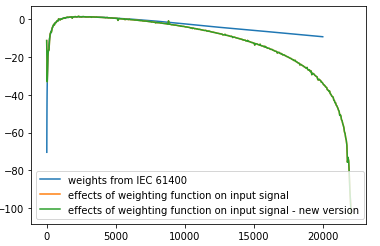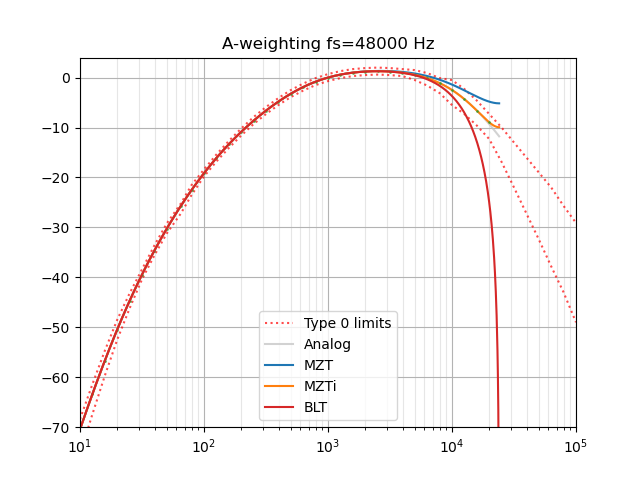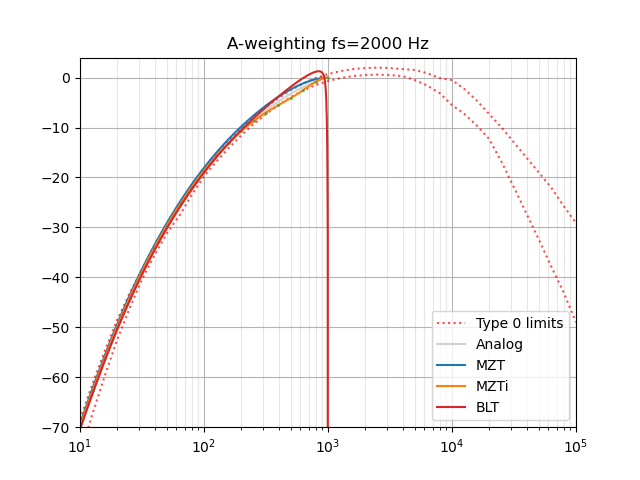|
#!/usr/bin/env python |
|
# -*- coding: utf-8 -*- |
|
""" |
|
Translated from a MATLAB script (which also includes C-weighting, octave |
|
and one-third-octave digital filters). |
|
|
|
Author: Christophe Couvreur, Faculte Polytechnique de Mons (Belgium) |
|
[email protected] |
|
Last modification: Aug. 20, 1997, 10:00am. |
|
BSD license |
|
|
|
http://www.mathworks.com/matlabcentral/fileexchange/69 |
|
Translated from adsgn.m to Python 2009-07-14 [email protected] |
|
""" |
|
|
|
from numpy import pi, polymul |
|
from scipy.signal import bilinear |
|
|
|
|
|
def A_weighting(fs): |
|
"""Design of an A-weighting filter. |
|
|
|
b, a = A_weighting(fs) designs a digital A-weighting filter for |
|
sampling frequency `fs`. Usage: y = scipy.signal.lfilter(b, a, x). |
|
Warning: `fs` should normally be higher than 20 kHz. For example, |
|
fs = 48000 yields a class 1-compliant filter. |
|
|
|
References: |
|
[1] IEC/CD 1672: Electroacoustics-Sound Level Meters, Nov. 1996. |
|
|
|
""" |
|
# Definition of analog A-weighting filter according to IEC/CD 1672. |
|
f1 = 20.598997 |
|
f2 = 107.65265 |
|
f3 = 737.86223 |
|
f4 = 12194.217 |
|
A1000 = 1.9997 |
|
|
|
NUMs = [(2*pi * f4)**2 * (10**(A1000/20)), 0, 0, 0, 0] |
|
DENs = polymul([1, 4*pi * f4, (2*pi * f4)**2], |
|
[1, 4*pi * f1, (2*pi * f1)**2]) |
|
DENs = polymul(polymul(DENs, [1, 2*pi * f3]), |
|
[1, 2*pi * f2]) |
|
|
|
# Use the bilinear transformation to get the digital filter. |
|
# (Octave, MATLAB, and PyLab disagree about Fs vs 1/Fs) |
|
return bilinear(NUMs, DENs, fs) |












@endolith Thank you for the helpful code.
I am new to digital signal processing.
I'm doing a project with digital MEMS microphones and using audiobusio library that has PDMin for recording over i2s with CircuitPython. My goal is to convert the digital output signal into dB SPL but still don't know how to do it :( Can I use this function for the I2S output signal?